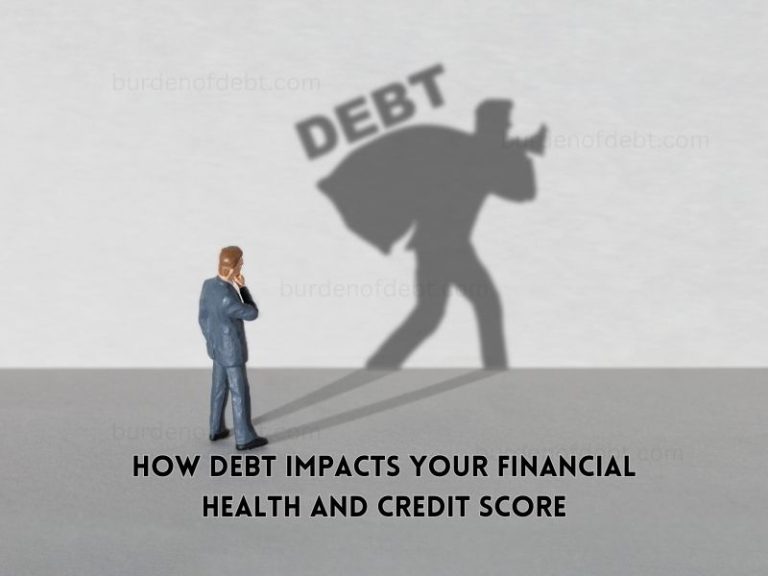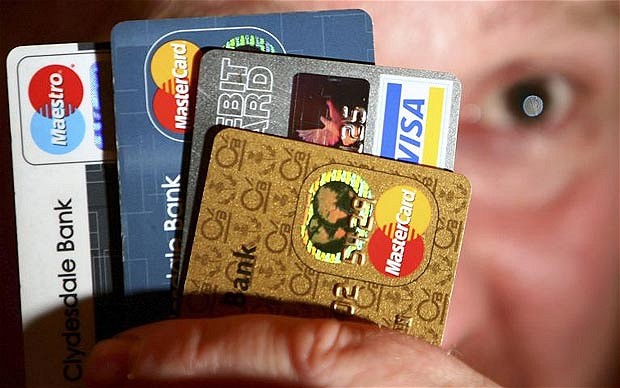Navigating The Path To Debt Freedom: A Comprehensive Guide
Are you overwhelmed by debt and unsure of how to break free from its grasp? Look no further than “Navigating The Path To Debt Freedom: A Comprehensive Guide.” This invaluable resource is designed to assist individuals facing financial challenges by providing expert advice, practical tips, and step-by-step strategies to regain control over their financial lives. With a wealth of information and insights, “Navigating The Path To Debt Freedom” is your ultimate companion on the journey towards financial freedom and a debt-free future.
Creating a Debt Repayment Plan
Assessing your current financial situation
Before you can formulate a successful debt repayment plan, it’s crucial to have a clear understanding of your current financial situation. Begin by gathering all your financial documents, such as bank statements, credit card statements, and loan agreements. Take note of your total debt amount, the interest rates on each debt, and the minimum monthly payments. Additionally, assess your income, expenses, and any other financial obligations you have. This evaluation will provide a solid foundation for creating an effective debt repayment plan.
Setting realistic goals
To create a debt repayment plan that is realistic and achievable, it’s important to set clear and measurable goals for yourself. Start by determining how much you want to reduce your debt by and establish a timeframe for achieving this goal. It’s essential to be realistic about what you can accomplish within a given time frame. Setting unattainable goals may lead to frustration and demotivation. Remember that the key is to make steady progress toward debt freedom, even if it means starting with smaller goals and gradually increasing them over time.
Choosing a debt repayment strategy
Once you have assessed your financial situation and set your goals, it’s time to choose a debt repayment strategy that aligns with your circumstances and preferences. Two popular methods are the snowball method and the avalanche method. The snowball method involves paying off your smallest debts first, while the avalanche method focuses on tackling debts with the highest interest rates first. Research and consider which approach suits you best. Some individuals might prefer a more customized approach, such as debt snowflaking, where any extra funds are allocated towards additional debt payments.
Creating a budget
A key component of any successful debt repayment plan is creating a budget. A budget helps you prioritize your spending, allocate funds towards debt payments, and monitor your progress. Start by listing all your income sources and subtracting essential expenses such as rent, utilities, and groceries. Then, allocate a portion of your remaining income towards debt payments. A budget will not only help you stay on track with your debt repayment goals but also provide valuable insights into your spending habits and areas where you can cut back.
Tracking your progress
Regularly tracking your progress is crucial to stay motivated and make adjustments to your debt repayment plan as necessary. Keep a record of each debt payment made and update your debt balances accordingly. Tracking your progress visually, such as with a debt repayment chart, can be especially motivating. Celebrate milestones along the way to keep your spirits high and encourage yourself to continue your journey toward debt freedom.
Debt Consolidation Options
Understanding debt consolidation
Debt consolidation is a strategy that involves combining multiple debts into one new loan or line of credit. This can simplify your debt repayment process by consolidating multiple monthly payments into a single payment. Debt consolidation can be done through personal loans, balance transfer credit cards, or home equity loans. By consolidating your debt, you can potentially obtain a lower interest rate, reduce your monthly payments, and have a clearer overview of your overall debt situation.
Evaluating the benefits and drawbacks
While debt consolidation can be a useful tool for managing debt, it’s important to carefully evaluate its benefits and drawbacks. Some advantages include the convenience of a single monthly payment and the potential for lower interest rates. However, it’s essential to consider the associated costs, such as origination fees and interest charges over the long term. Additionally, consolidating debts might not address the root causes of your debt and could potentially lead to accumulating more debt if spending habits aren’t addressed.
Types of debt consolidation options
There are several debt consolidation options to choose from based on your individual circumstances. Personal loans are a common choice, as they provide a lump sum to pay off your existing debts, leaving you with a single loan to repay. Balance transfer credit cards offer low or 0% interest rates for an introductory period, allowing you to transfer high-interest credit card balances onto a new card. Home equity loans utilize the equity in your home as collateral to pay off your debts. Research and compare these options to determine the best fit for your needs.
Working with a debt consolidation company
If you find the process of debt consolidation overwhelming or confusing, consider seeking assistance from a reputable debt consolidation company. These organizations specialize in helping individuals create personalized debt management plans, negotiating with creditors, and offering financial counseling. However, it’s crucial to research and choose a reputable company that operates ethically and transparently. Ensure they have a good track record and are registered with relevant regulatory bodies before committing to their services.
Dealing with Creditors
Communicating with creditors
Open and honest communication with your creditors is vital when dealing with debt. If you are facing financial difficulties or struggling to meet your repayment obligations, it’s essential to contact your creditors as soon as possible. Explain your situation honestly and request any potential options available, such as temporary payment reductions or alternative payment arrangements. Many creditors are willing to work with you if they understand your circumstances and believe you are making a genuine effort to resolve your debts.
Negotiating lower interest rates
Lowering the interest rates on your debts can significantly reduce the overall amount you’ll pay in the long run. Consider negotiating with your creditors to lower the interest rates on your outstanding balances. This can be especially effective if you have a good repayment history or if your financial circumstances have changed since initially taking on the debt. It’s important to approach the negotiation process with confidence and provide any relevant supporting documentation that demonstrates your ability to fulfill reduced payment terms.
Exploring debt settlement options
In some cases, negotiating a debt settlement might be a viable option. A debt settlement involves reaching an agreement with your creditor to pay a lump sum that is less than the total amount owed, in exchange for considering the debt fully satisfied. This option typically applies to individuals facing significant financial hardships or who are unable to meet their debt obligations. However, debt settlement can have serious consequences, such as damaging your credit score and potential tax implications. Consider consulting with a professional before exploring this option.
Understanding the impact on your credit score
It’s important to understand that while implementing debt repayment strategies and negotiating with creditors, there may be an impact on your credit score. Missing payments or defaulting on debts can have a negative impact, while consistent, on-time payments can help improve your credit score over time. It’s essential to weigh the potential short-term impact on your credit score against the long-term benefits of resolving your debts. By effectively managing your debt and meeting your financial obligations, you can gradually rebuild your creditworthiness.

Managing Your Expenses
Identifying and cutting unnecessary expenses
To free up more money for debt repayment, it’s crucial to identify and eliminate unnecessary expenses. Take a close look at your monthly expenditures and distinguish between essential and nonessential expenses. Nonessential expenses may include dining out, entertainment subscriptions, or impulse purchases. Consider cutting back on these discretionary expenses and redirecting the saved funds toward debt repayment. While it may require temporary sacrifices, reducing unnecessary expenses can accelerate your progress toward debt freedom.
Prioritizing essential spending
While cutting back on nonessential expenses, it’s important to ensure that essential spending is prioritized. Essential expenses include housing costs, utilities, groceries, transportation, and healthcare. Creating a realistic budget that allocates sufficient funds for these necessities will help ensure that you meet your basic needs while working towards debt repayment. Prioritizing essential spending also provides financial security and peace of mind during your debt repayment journey.
Implementing cost-saving measures
Aside from cutting back on unnecessary expenses, implementing cost-saving measures in various areas of your life can significantly contribute to your debt repayment efforts. Look for opportunities to save on recurring expenses such as insurance premiums, utility bills, and internet or cable subscriptions. Consider shopping around for competitive rates, negotiating with service providers, or exploring alternative options. Small adjustments in your everyday spending habits can add up over time and contribute to your overall financial well-being.
Finding ways to increase your income
In addition to reducing expenses, finding ways to increase your income can expedite your debt repayment plan. Evaluate your skills, talents, and resources to identify potential opportunities for earning extra money. This may involve taking on a side gig, freelancing, or monetizing a hobby or talent. Explore platforms and marketplaces that connect individuals with gig-based work or consider offering services independently. Generating additional income allows you to allocate more funds towards debt repayment, potentially shortening the duration of your repayment plan.
Building an Emergency Fund
Understanding the importance of an emergency fund
Building an emergency fund is a critical aspect of achieving financial stability and avoiding future debt. An emergency fund serves as a financial safety net, providing funds to cover unexpected expenses such as medical emergencies, car repairs, or sudden unemployment. Without an emergency fund, individuals often resort to taking on additional debt to cover such expenses, further exacerbating their financial situation. By establishing an emergency fund, you create a buffer that protects you from accruing more debt in times of crisis.
Determining the ideal emergency fund size
The ideal size of an emergency fund depends on various factors, such as your monthly expenses, income stability, and existing debt obligations. As a general guideline, aim to save at least three to six months’ worth of essential expenses. This ensures that you have enough funds to cover unforeseen circumstances without resorting to credit cards or loans. However, individuals with unstable income sources or higher levels of debt may benefit from saving a larger emergency fund to provide additional financial security.
Creating a plan to save for emergencies
To establish an emergency fund, it’s crucial to create a structured plan for saving. Start by designating a specific amount of money each month to put toward your emergency fund. Consider setting up automatic transfers from your primary bank account to a separate savings account designated solely for emergencies. Treat this contribution as a fixed expense and prioritize it alongside your debt payments. Regularly review your progress and adjust your savings plan if necessary to ensure that you are consistently building your emergency fund.
Tips for staying motivated
Saving for an emergency fund can sometimes feel like a slow and tedious process. To stay motivated throughout your savings journey, celebrate small milestones along the way. Set mini-goals and reward yourself each time you achieve them. Consider visual aids, such as a progress chart or a savings jar, to track your progress visually. Remind yourself of the peace of mind and financial security that having an emergency fund brings. By staying motivated, you’ll continue building your fund and safeguarding yourself against future debt.
Utilizing Debt Management Strategies
Snowball method
The snowball method is a popular debt management strategy that focuses on paying off your smallest debts first while making minimum payments on larger debts. By tackling smaller debts early on, you can experience quick wins and build momentum as you gradually eliminate each debt. As debts are paid off, direct the funds that were previously allocated to those debts toward larger debts. This approach not only helps you gain confidence in your ability to eliminate debt but also reduces the number of monthly payments you need to manage.
Avalanche method
The avalanche method, on the other hand, prioritizes debts with the highest interest rates. Start by making minimum payments on all debts, and allocate any remaining funds towards the debt with the highest interest rate. Once that debt is paid off, redirect the funds toward the debt with the next highest interest rate, and continue this process until all debts are eliminated. This method can save you money by minimizing the overall interest paid over time.
Debt snowflaking
Debt snowflaking is a strategy that complements the snowball or avalanche method. It involves making additional payments towards your debts whenever you have extra funds, such as receiving a bonus at work or selling unused items. Instead of spending this additional money, put it towards your debt payments. These extra payments can help accelerate your progress and reduce the time it takes to become debt-free. Over time, the accumulation of these small “snowflakes” can make a significant difference in your debt repayment journey.
Getting professional advice
If managing your debt becomes overwhelming or you’re unsure of the best strategy for your situation, seeking professional advice can be beneficial. A reputable credit counseling agency or financial advisor can provide personalized guidance on creating a debt management plan, exploring appropriate strategies, and negotiating with creditors. These professionals have the expertise and experience to assess your financial situation objectively and provide you with a comprehensive plan to overcome your debts.
Avoiding Debt Relapse
Changing spending habits
To prevent falling back into debt after making progress towards becoming debt-free, it’s crucial to change any spending habits that may have contributed to your previous debt situation. This involves identifying triggers that lead to impulsive or unnecessary purchases and developing strategies to overcome them. Consider practicing mindful spending, tracking every expense, and implementing self-imposed waiting periods before making nonessential purchases. By adopting new, healthier spending habits, you can avoid repeating past mistakes and maintain your debt-free status.
Creating a long-term financial plan
A long-term financial plan is essential to ensure that you remain financially stable and equipped to handle future expenses without resorting to credit or loans. Assess your financial goals and develop a comprehensive plan that encompasses saving for retirement, investments, and other financial milestones. Consider consulting with a financial advisor to help you develop a plan suited to your individual circumstances. By having a clear roadmap for your financial future, you increase the likelihood of staying debt-free and achieving long-term financial success.
Effective strategies for staying debt-free
Staying debt-free requires ongoing commitment and resilience. Implementing key strategies can help you stay on track and avoid slipping back into old habits. Establish a strong support system of friends or family who can offer encouragement and accountability. Utilize technology tools like budgeting apps or expense trackers to stay organized and monitor your spending. Regularly review your financial goals to stay motivated and track your progress. By employing these strategies consistently, you can maintain your newfound financial freedom and enjoy a debt-free life.
Seeking ongoing support and advice
Even after becoming debt-free, it’s beneficial to seek ongoing support and advice to ensure that you stay on the right track. Attend financial literacy workshops or seminars to expand your knowledge and learn new strategies for managing your finances effectively. Consider joining support groups or online communities where individuals with similar debt experiences share their stories and offer encouragement. Continuous learning and seeking advice from financial professionals can help you maintain your financial well-being and avoid falling back into debt.
Understanding Credit Scores
Importance of credit scores
Credit scores play a significant role in financial transactions and can impact your ability to secure loans, mortgages, or favorable interest rates. Your creditworthiness is assessed based on your credit score, which reflects your credit history and payment behavior. A good credit score demonstrates reliability and responsible financial management, while a low credit score may limit your options and result in higher interest rates or loan denials. Understanding and managing your credit score is crucial for maintaining financial flexibility and securing favorable terms in future transactions.
Factors affecting credit scores
Several factors contribute to the calculation of your credit score. Payment history, which includes on-time payments and any missed or late payments, has the most significant impact. The amount owed and the credit utilization ratio, or the proportion of your available credit that you are using, are also influential factors. The length of your credit history, the types and number of credit accounts, and any recently opened credit accounts or applications make up the remaining components. Monitoring these factors and maintaining positive credit behaviors can help improve and maintain a good credit score.
Monitoring and managing credit scores
Monitoring your credit score regularly is essential to identify any errors or discrepancies that may negatively impact your creditworthiness. Obtain free annual copies of your credit reports from each of the major credit reporting agencies and review them thoroughly for accuracy. In case of errors, follow the necessary steps to dispute and rectify them as soon as possible. Utilize credit monitoring services or credit score tracking tools to stay updated and receive alerts regarding any changes to your credit history. By actively managing and monitoring your credit score, you can ensure its accuracy and take the necessary steps to improve it.
Improving your credit score
If your credit score is less than ideal, it’s never too late to start taking steps to improve it. Begin by making all your payments on time, as this has a significant impact on your credit score. Reduce the amount of debt you owe by paying down existing balances, starting with high-interest debts first. Avoid opening unnecessary credit accounts and maintain a low credit utilization ratio to demonstrate responsible credit management. Over time, these positive behaviors will improve your credit score and increase your chances of obtaining favorable financial terms.

Dealing with Student Loan Debt
Understanding different repayment options
Student loan debt can be a significant financial burden for many individuals. Understanding the various repayment options available can help you manage this debt more effectively. Standard repayment plans typically involve making fixed monthly payments over a specified period. Graduated repayment plans start with lower payments that gradually increase over time. Income-driven repayment plans base the payment amount on your income and family size. Research and evaluate the different repayment options to determine which one aligns best with your financial situation and long-term goals.
Evaluating loan forgiveness programs
Loan forgiveness programs provide relief for borrowers with significant student loan debt by forgiving a portion of their loan balance after meeting specific criteria. Public Service Loan Forgiveness (PSLF) is a notable program that offers loan forgiveness to individuals working in qualifying public service jobs after making 120 consecutive payments. Teacher Loan Forgiveness programs, as well as forgiveness programs for healthcare professionals and military personnel, are among other options. These programs can significantly reduce your student loan burden, but it’s essential to understand and meet their requirements to qualify for forgiveness.
Consolidating or refinancing student loans
Consolidating or refinancing student loans can streamline your repayment process and potentially reduce your monthly payments. Loan consolidation combines multiple federal student loans into one loan, simplifying repayment with a single monthly payment. Refinancing involves replacing existing loans with a new loan from a private lender, often with a different interest rate or repayment term. Before refinancing or consolidating, carefully assess the potential benefits, drawbacks, and terms associated with these options to ensure they align with your financial goals.
Managing private student loan debt
Private student loans often come with higher interest rates and fewer repayment options compared to federal loans. If you have private student loan debt, it’s important to communicate with your lender and explore any potential repayment or modification options available. Discuss the possibility of refinancing or consolidating your private student loans to obtain a more favorable interest rate or repayment terms. Additionally, inquire about any hardship programs or loan modifications that might be offered by your private lender to provide temporary relief from repayment obligations during times of financial difficulty.
Exploring Bankruptcy as a Last Resort
Understanding bankruptcy and its consequences
Bankruptcy is a legal process that provides individuals overwhelmed by debt with a fresh start by eliminating or restructuring their debts. There are different types of bankruptcy, the most common being Chapter 7 and Chapter 13. Chapter 7 involves the liquidation of assets to repay creditors, while Chapter 13 creates a repayment plan that allows individuals to pay off their debts over a specified period. It’s important to be aware that bankruptcy has serious consequences, including damage to your credit score and potential loss of assets. Consult with a bankruptcy attorney to fully understand the implications before considering this option.
Assessing your eligibility for bankruptcy
To determine your eligibility for bankruptcy, you must meet certain criteria set by the bankruptcy code. Qualifications vary depending on the type of bankruptcy you are considering. Chapter 7 bankruptcy, for example, requires individuals to pass a means test to demonstrate their inability to repay their debts. The means test evaluates your income, expenses, and household size to determine whether you qualify. Chapter 13 bankruptcy is typically available for individuals with a stable income who can commit to a repayment plan. Consulting with a bankruptcy attorney will help you understand your eligibility based on your specific circumstances.
Deciding when bankruptcy is the right option
Bankruptcy should be considered as a last resort, after exhausting all other possible options for resolving your debts. It’s crucial to carefully assess your financial situation, explore debt repayment strategies, and seek professional advice before deciding to file for bankruptcy. Bankruptcy can have long-term implications and should only be pursued if all other alternatives have been deemed unattainable. Consider consulting with a bankruptcy attorney to determine whether bankruptcy is the right option for you and to navigate the complex legal process involved.
Understanding the bankruptcy process
The bankruptcy process can be complex and overwhelming. It typically involves filing a petition with the bankruptcy court, attending credit counseling sessions, and appearing before a bankruptcy trustee. The specific requirements and steps involved depend on the type of bankruptcy being pursued. It’s essential to understand the process thoroughly, hire an experienced bankruptcy attorney, and gather all necessary documentation to support your case. Your attorney will guide you through each step, ensuring that all legal requirements are met, and protecting your best interests throughout the process.
In conclusion, navigating the path to debt freedom requires careful planning, dedication, and informed decision-making. By assessing your current financial situation, setting realistic goals, and choosing a suitable debt repayment strategy, you can take the first steps toward achieving financial freedom. Exploring debt consolidation options, effectively communicating with creditors, managing expenses wisely, and building an emergency fund are essential components of a successful debt repayment plan. Utilizing debt management strategies, understanding credit scores, dealing with student loan debt, and considering bankruptcy as a last resort provide additional tools and options for individuals seeking debt relief. With perseverance, ongoing support, and a commitment to long-term financial stability, you can overcome your debt and embrace a future of financial freedom.
© 2015-2023 by burdenofdebt.com, a LIVenture. All rights reserved. No part of this document may be reproduced or transmitted in any form or by any means, electronic, mechanical, photocopying, recording, or otherwise, without prior written permission of LiVentures LLC.







